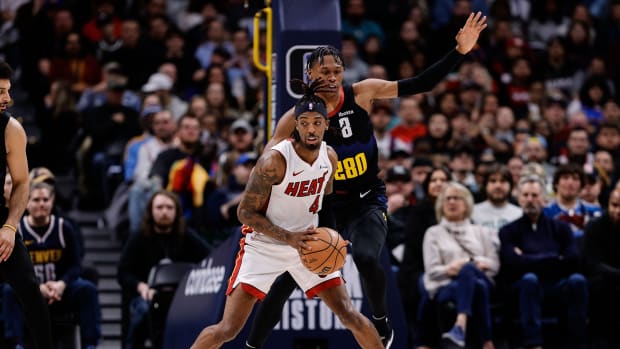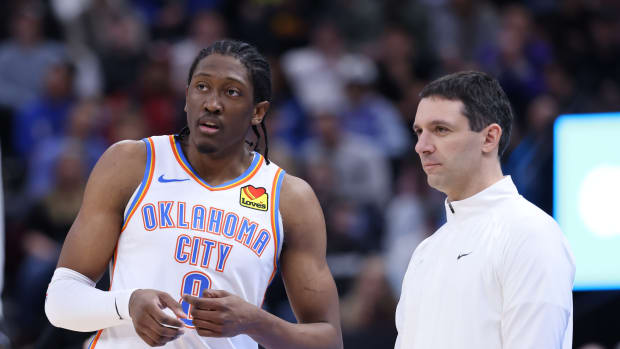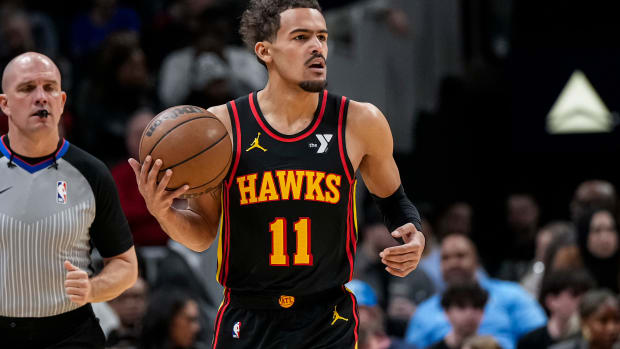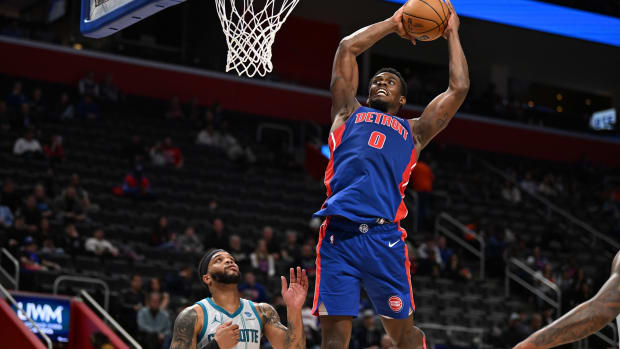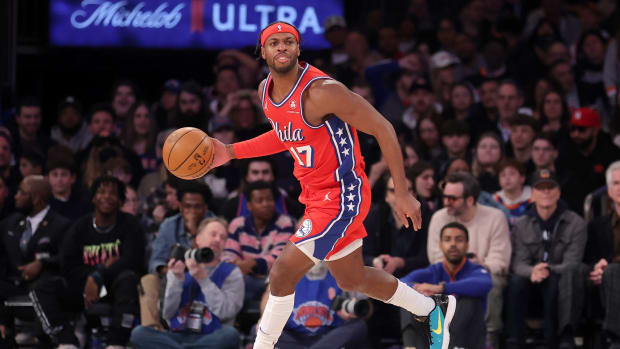Free From the Suns and the Salon, Eric Bledsoe Is Thriving
It was one month ago that Eric Bledsoe set in motion a course of events that would make him a Milwaukee Buck. Self-interest has its benefits. There is an alternate reality where Bledsoe dutifully moped his way through yet another losing campaign in Phoenix to no constructive end for anyone involved. In our universe, he fired off a single tweet and all but forced the Suns' hand.
Bledsoe's wish to escape was granted quickly and mercifully, sending him across conferences to the ambitious (if uneven) Bucks. If all went according to plan, Bledsoe would soon log his first playoff minutes since 2013. And to think: all this because Bledsoe ... got fidgety in the waiting area of a not-at-all-imaginary hair salon.
The Bucks are 11-5 since the trade, winners of three straight and six of their last seven. With Bledsoe (18.0 PPG, 4.0 RPG, 4.2 APG) in tow, they are distinctly less maddening—not as prone to wide-eyed implosion, even as they sort themselves out on the fly. Milwaukee was one of the worst defensive teams in the league before the trade. Their ultra-aggressive style was, at times, self-defeating; to pull it off required the Bucks to walk a tightrope of near-perfect execution, smothering the ball-handler with multiple defenders while scrambling to cover every other option on the board. When that approach works, it walls off opponents from everywhere they mean to go. When it doesn't, it tends to cede wide open shots from the most dangerous spots on the floor.
Bledsoe has the speed and instincts to increase the Bucks' margin for error, not to mention the size to leave open the possibility for change. Milwaukee has toyed in recent weeks with various systematic adjustments: some scaled-back versions of their usual defense, others full-fledged overhauls. Bledsoe is handy in either pursuit. With this trade, Milwaukee effectively traded the kind of plodding, traditional center who limits a team's defensive options (Greg Monroe) for the sort of eminently switchable point guard who expands them. Bledsoe himself might not be transformational, but he's flexible enough to help sell a team on what might be possible.
Over the last month, the Bucks have bordered on top-10 defense. They're still not elite on that end nor on offense, but they sit tantalizingly close for a team with room yet to grow. Giannis Antetokounmpo ensures that in most every game, the Bucks will have the best player on the floor. With Bledsoe and Khris Middleton (not to mention the eventual return of Jabari Parker), Milwaukee is closing in on an elevated viability—the kind of dynamic center at the heart of the league's best teams.
That core trio has been brilliant on both sides of the ball in its first 300+ minutes, wrecking opponents by nearly 17 points per 100 possessions. It was fair to wonder whether replacing Malcolm Brogdon with Bledsoe in the starting lineup might compromise Milwaukee's spacing. Teams loaded up against Antetokounmpo as it was. How might they respond to the presence of another iffy shooter?
It has turned out not to matter much, in part because Bledsoe's addition makes the Bucks that much more difficult to counter. The boon of a player like Bledsoe lies in making Milwaukee less predictable. The Bucks can run all the motion and preamble they like, but none of it changes the fact that most of their players only pose scoring threats in very specific situations. Bledsoe is a more chaotic element—a driver who can upshift quickly to catch a defense off-balance, creating downhill opportunities all over the floor.
The Scars That Shape Jabari Parker
Tempting as it is to pack the paint, Antetokounmpo and Bledsoe are quick enough to tug at a defense's commitment to that idea and then slice through. Bledsoe is nearing career-best efficiency as a Buck, even while shooting a substandard 31.4% from beyond the arc. He makes up the difference from 15 feet in, peppering defenses with layups, runners, and short pull-up jumpers. It helps, too, that opponents must now account for Middleton in top form (20.7 points on 63.3% True Shooting, five rebounds, and four assists per game since the trade) and two-guard lineups where Bledsoe and Brogdon play in tandem. Together, Antetokounmpo and Bledsoe run a low-turnover offense that is about as demanding as it can be considering the modest amount of shooting involved.
The only real catch: The Bucks—even after adding another playmaker—have yet to play solvent basketball when Antetokounmpo rests. This may be where layered injuries to various role players have hurt the Bucks most. This is not a deep team. The difference between Tony Snell and DeAndre Liggins is a profound one. The compounding injuries of Parker and Mirza Teletovic deny the Bucks a certain frontcourt optionality. One would think that the combination of Bledsoe, Brogdon, and Middleton could carry a lineup against reserves, and the talent involved suggests they eventually might. They just haven't quite figured out how with the personnel available.
Getting back a rotation regular or two could do wonders. Keep in mind: Milwaukee is adjusting to losing its best bench player as it incorporates a new point guard as it digests another starting lineup change (John Henson stepping in for Thon Maker at center) as it copes with injury. Some clumsiness is allowed. Bledsoe helps make it workable, turning an awkward interim into something productive with the force of his improvisational game. Talent wins for a reason.































